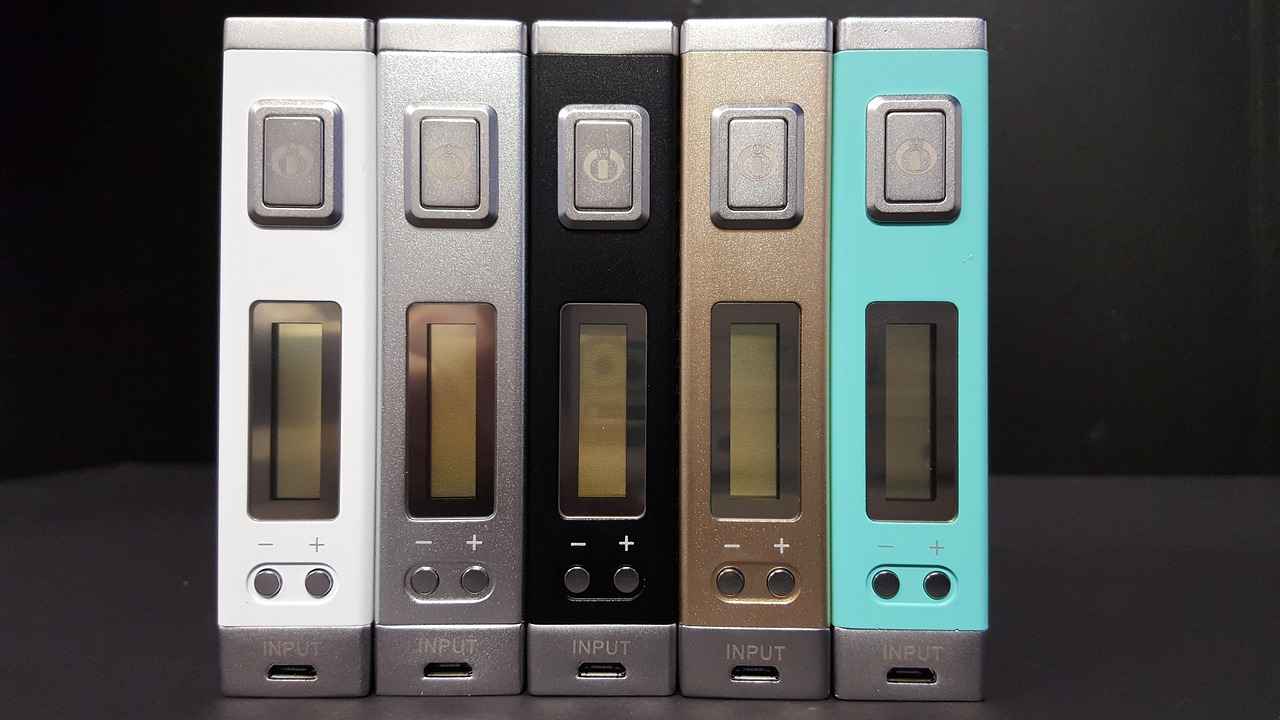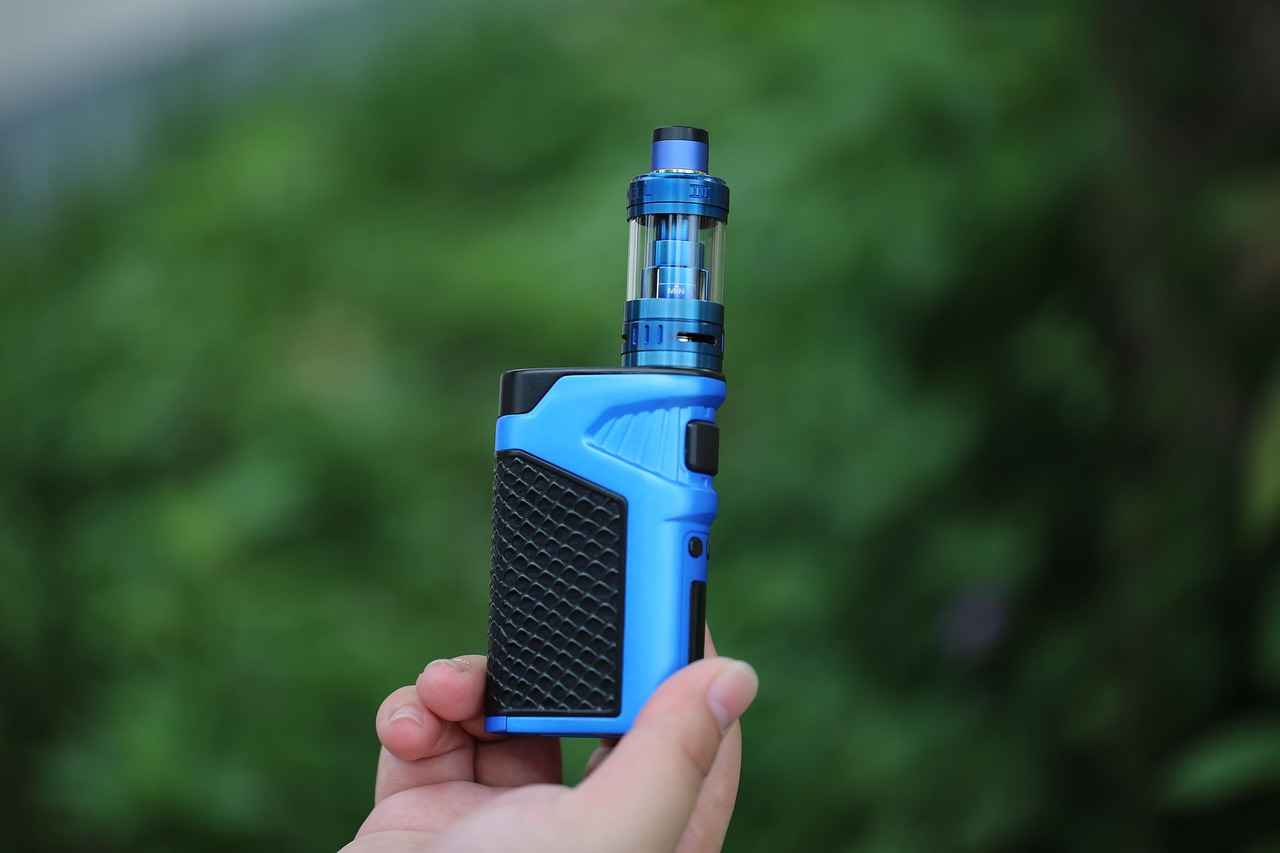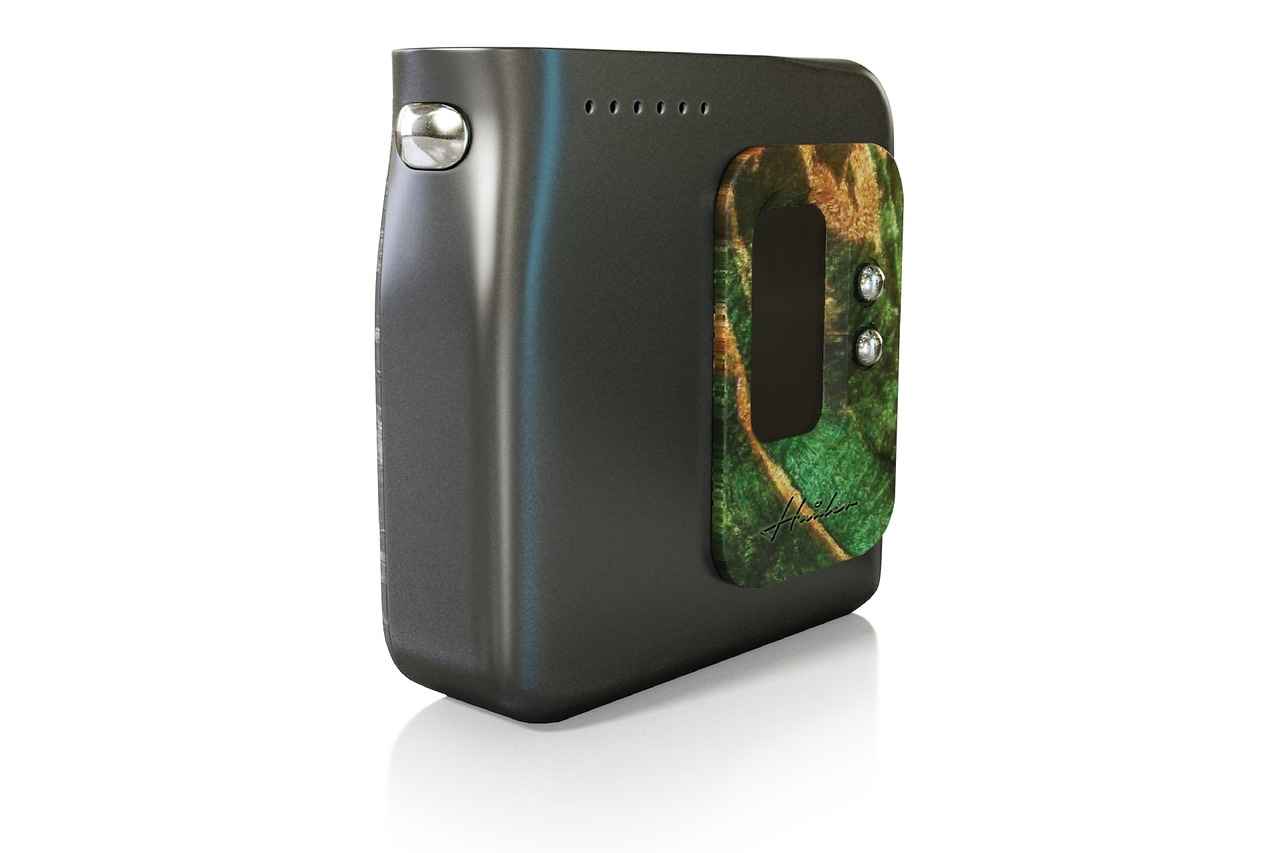The vape industry has undergone significant transformation over the past few years, and as we approach 2025, several companies have emerged as leaders in this dynamic market. This article delves into the top vape companies that are not only shaping the industry but also influencing consumer preferences and driving innovation.
As the vape market continues to expand, key players have established themselves through strategic marketing and innovative product offerings. Companies such as Juul Labs, British American Tobacco, and Altria are at the forefront, each employing unique strategies to capture market share. Juul, for instance, has focused on sleek design and user-friendly technology, while British American Tobacco has diversified its product range to include a variety of flavors and nicotine strengths.
The evolution of the vape market can be traced back to the early 2000s, with the introduction of e-cigarettes. Over the years, the market has seen significant milestones, such as the rise of pod systems and disposable vapes. These trends have been pivotal in attracting a broader audience, particularly younger consumers who are seeking alternatives to traditional smoking.
Innovation remains a cornerstone of success in the vape industry. Companies are investing heavily in research and development to enhance user experience. For instance, advancements in battery technology and vapor production have led to more efficient and satisfying products. Additionally, the introduction of smart vaping technology, which allows users to control their devices via smartphone apps, is gaining traction.
The global vape market is dominated by several key players. A recent analysis reveals that companies like Vuse and Njoy are also making significant strides. These brands not only hold substantial market shares but also differentiate themselves through targeted marketing campaigns and unique product lines tailored to consumer preferences.
Regulatory frameworks are crucial in shaping the operational landscape for vape companies. Different regions impose varying regulations on product ingredients, marketing practices, and sales. Understanding these regulations is essential for companies aiming to navigate the complexities of compliance while still appealing to consumers.
Consumer preferences are a driving force behind product development in the vape industry. As trends shift towards healthier lifestyles, companies are responding by offering nicotine-free options and organic ingredients. Moreover, the demand for customizable vaping experiences has led to a rise in personalized products that cater to individual tastes.
With the growth of the vaping industry, environmental concerns have also emerged. Leading vape companies are increasingly adopting sustainability practices, such as using recyclable materials and reducing waste in their production processes. This commitment to environmental responsibility not only enhances brand image but also aligns with the values of environmentally-conscious consumers.
The vape industry faces numerous challenges, including intense competition and evolving public perception. Major companies are adapting by enhancing their marketing strategies, focusing on education about vaping’s relative safety compared to traditional smoking, and engaging in community outreach to build trust.
Looking ahead, the vape industry is poised for further innovation. Anticipated trends include the integration of advanced technologies such as artificial intelligence and augmented reality into vaping products. These advancements will likely enhance user engagement and create more interactive experiences.
Brand loyalty is crucial for long-term success in the vape market. Leading companies are implementing strategies such as loyalty programs, exclusive product releases, and community-building initiatives to foster strong relationships with their customers. By prioritizing brand loyalty, these companies can ensure sustained growth and a competitive edge in the market.

What Are the Top Vape Companies in 2025?
The vape industry is experiencing a remarkable transformation, with numerous companies emerging as leaders in the market. As we look towards 2025, it becomes essential to identify the top vape companies that are not only shaping the industry but also influencing consumer preferences and market trends.
In 2025, the vape industry is dominated by several key players, each contributing uniquely to the market landscape. Here are some of the most influential companies:
- Juul Labs: Known for its sleek design and user-friendly products, Juul remains a significant player. The company has focused on nicotine delivery systems that appeal to both new and experienced vapers.
- British American Tobacco (BAT): With a diverse portfolio that includes e-cigarettes, BAT has invested heavily in research and development. Their Vuse brand is particularly popular, showcasing innovative technology and a wide range of flavor options.
- Philip Morris International (PMI): PMI has pivoted towards a smoke-free future, introducing its IQOS product line. This shift emphasizes the company’s commitment to reducing the harm associated with traditional smoking.
- Altria Group: A major player in the tobacco industry, Altria has made significant investments in vaping technology, including its partnership with Juul, to expand its market reach.
- Geekvape: Focusing on advanced vaping devices, Geekvape is known for its high-quality products that cater to enthusiasts. Their commitment to innovation has earned them a loyal customer base.
These companies have adopted various strategies to maintain their leadership positions. For instance, many are investing in research and development to enhance product safety and user experience. Additionally, they are expanding their product lines to include a wide range of flavors and device types, catering to the diverse preferences of consumers.
Moreover, the competitive landscape is shaped by the companies’ ability to adapt to changing regulations and consumer demands. As vaping becomes more mainstream, these top players are focusing on brand loyalty and customer engagement, leveraging social media and influencer partnerships to connect with their audience.
As we move forward, the influence of these companies on the vaping landscape will likely continue to grow. Their ability to innovate and respond to market challenges will be crucial in shaping the future of vaping. With a focus on sustainability and health-conscious products, the top vape companies are not only redefining their brands but also setting new standards for the industry.
In conclusion, the vape industry in 2025 is characterized by a dynamic mix of traditional tobacco companies and innovative startups. As these market leaders continue to evolve, they will play a pivotal role in shaping consumer preferences and driving industry growth.

How Has the Vape Market Evolved Over the Years?
The evolution of the vape market is a fascinating journey that mirrors changes in consumer preferences, technology, and regulatory landscapes. From its inception to the current day, the industry has undergone significant transformations that have shaped its dynamics and growth trajectory. In this section, we will delve into the key milestones and trends that have defined the vape market over the years.
- Early Beginnings: The vape industry began to take shape in the early 2000s with the introduction of the first commercial electronic cigarette. This innovation aimed to provide a less harmful alternative to traditional smoking, attracting health-conscious consumers.
- Rapid Growth: By the late 2000s and early 2010s, the vape market experienced explosive growth. Companies began to emerge, offering a variety of products, including e-liquids with diverse flavors and customizable devices. This period marked the rise of vaping as a cultural phenomenon.
- Emergence of Regulations: As the popularity of vaping surged, so did concerns about its safety and health implications. Regulatory bodies worldwide began to implement guidelines and restrictions on advertising, product ingredients, and age restrictions, which significantly impacted market operations.
- Technological Advancements: The introduction of advanced technologies, such as temperature control and sub-ohm devices, transformed the vaping experience. These innovations allowed for a more tailored and enjoyable user experience, attracting a broader audience.
- Shift in Consumer Preferences: As consumers became more informed about vaping, preferences shifted towards high-quality products with unique flavors and customizable options. This shift prompted companies to innovate continuously and cater to the evolving demands of their customer base.
- Global Expansion: The vape market expanded beyond its initial strongholds in North America and Europe, reaching markets in Asia, Africa, and Latin America. This global expansion introduced new challenges and opportunities for companies, necessitating localized marketing strategies.
- Public Health Debates: The rise of vaping has sparked significant public health discussions. Concerns about youth vaping and the long-term health effects of e-cigarettes have led to increased scrutiny and calls for stricter regulations, influencing how companies operate.
- Sustainability Initiatives: In recent years, there has been a growing emphasis on sustainability within the vape industry. Companies are increasingly adopting eco-friendly practices, such as recyclable packaging and reducing waste, to address environmental concerns and appeal to environmentally-conscious consumers.
In summary, the vape market has evolved significantly over the years, driven by technological advancements, changing consumer preferences, and regulatory developments. Understanding these historical contexts is crucial for grasping the current dynamics of the industry and anticipating future trends. As we move forward, the vape market will likely continue to adapt and innovate in response to both challenges and opportunities, shaping its future landscape.

What Innovations Are Driving Vape Company Success?
Innovation is a driving force in the vape industry, significantly influencing market dynamics and consumer preferences. As the industry evolves, leading companies are continuously enhancing their products to meet the ever-changing demands of users. This section delves into the technological advancements and innovative product developments that have propelled these companies to the forefront of the market.
One of the most notable innovations in the vape industry is the advancement of device technology. Modern vape devices are now equipped with sophisticated features such as temperature control, customizable wattage settings, and enhanced battery life. These features not only improve user experience but also allow for a more personalized vaping experience. Companies like Juul and Vaporesso have been at the forefront of this technological evolution, introducing devices that cater to both novice and experienced vapers.
Furthermore, the introduction of pod systems has revolutionized the way consumers approach vaping. These compact and user-friendly devices offer convenience and portability, making them an attractive option for a broader audience. The ease of use and the variety of flavors available in pod systems have contributed to their popularity, particularly among younger consumers.
In addition to device advancements, e-liquid formulations have also seen significant improvements. Companies are investing in research and development to create high-quality e-liquids that offer unique flavors and enhanced nicotine delivery systems. The use of natural ingredients and the reduction of harmful substances have become a priority, as consumers are increasingly health-conscious. Brands like Naked 100 and Element are leading the charge in providing premium e-liquid options that cater to diverse tastes while prioritizing safety.
Moreover, the integration of smart technology into vaping devices is another key innovation. Smart vapes can connect to mobile applications, allowing users to track their usage, customize their settings, and even monitor their health metrics. This level of interactivity not only enhances user engagement but also provides valuable data for companies to refine their products further.
As the regulatory landscape continues to evolve, companies are also innovating in sustainability practices. Many leading vape brands are adopting eco-friendly manufacturing processes and packaging to reduce their environmental impact. This commitment to sustainability resonates with consumers who are increasingly concerned about the ecological footprint of their purchases.
In conclusion, the vape industry’s success is heavily reliant on continuous innovation. From advanced device technology to unique e-liquid formulations and smart technology integration, companies are pushing the boundaries to meet consumer demands. As these innovations shape the market, they not only enhance the vaping experience but also foster brand loyalty among users, ensuring that leading companies remain at the forefront of this competitive industry.

Who Are the Major Players in the Global Vape Market?
The global vape market has witnessed significant transformation over the years, with several key players emerging as leaders in this dynamic industry. Understanding who these companies are, along with their market share and unique selling propositions, is crucial for anyone interested in the vaping landscape.
As of 2025, the vape market is dominated by a few major companies that have successfully carved out substantial market shares. These companies not only lead in sales but also set trends in product innovation and marketing strategies. Below is an overview of some of the most influential players in the global vape market:
- Juul Labs: Known for its sleek design and high nicotine content, Juul has captured a significant portion of the U.S. market. The company focuses on user-friendly devices and a range of flavors, appealing to both new and experienced vapers.
- British American Tobacco (BAT): With its extensive portfolio of tobacco products, BAT has expanded into the vape sector with brands like Vype and glo. Their strategy emphasizes diversification and innovation, catering to a wide range of consumer preferences.
- Philip Morris International (PMI): PMI has invested heavily in smoke-free alternatives, including its IQOS heated tobacco product. The company aims to transition smokers to less harmful alternatives, showcasing a commitment to sustainability.
- Altria Group: As a major player in the tobacco industry, Altria has also made significant investments in vaping through its partnership with Juul. This collaboration focuses on expanding market reach while navigating regulatory challenges.
- GeekVape: Renowned for its high-quality vaping devices, GeekVape targets the enthusiast segment with advanced technology and customizable options, appealing to more experienced users.
Each of these companies has developed unique selling propositions that cater to different segments of the market. For instance, while Juul focuses on convenience and discreet use, companies like GeekVape emphasize performance and customization. This variety allows consumers to choose products that best fit their lifestyle and preferences.
In terms of market share, Juul Labs has been a dominant force in the U.S., while BAT and PMI have leveraged their established brands to gain traction in international markets. The competition among these companies drives innovation, leading to the development of new products and technologies that enhance user experience.
Furthermore, the emergence of smaller, niche brands has also contributed to the market’s vibrancy. These companies often focus on specific consumer needs, such as organic ingredients or unique flavor profiles, which can challenge larger corporations to adapt and evolve.
Understanding the major players in the vape market is essential for grasping the industry’s current dynamics. As these companies continue to innovate and respond to consumer demands, they will shape the future of vaping, influencing everything from product development to marketing strategies.

What Role Do Regulations Play in the Vape Industry?
The vape industry operates in a complex environment shaped by a myriad of regulatory frameworks that vary significantly across different regions. These regulations can have profound effects on how vape companies strategize their market approaches and manage their operations. Understanding the role of regulations is crucial for stakeholders in the vaping industry, including manufacturers, retailers, and consumers.
Regulatory frameworks often dictate the legal parameters within which vape companies must operate. For example, in the United States, the Food and Drug Administration (FDA) has implemented strict guidelines governing the manufacturing and marketing of vaping products. These regulations require companies to submit their products for review and approval, which can delay product launches and increase operational costs. In contrast, some regions may have more lenient regulations, allowing companies to innovate and bring products to market more rapidly.
Compliance with regulations is not just a legal obligation; it can also be a competitive advantage. Companies that proactively adapt to regulatory changes can position themselves as leaders in the market. For instance, firms that invest in research and development to create safer, compliant products can enhance their brand reputation and attract health-conscious consumers. Conversely, companies that fail to comply risk facing hefty fines, product recalls, and damage to their reputation.
| Region | Regulatory Body | Key Regulations |
|---|---|---|
| United States | FDA | Pre-market tobacco product application (PMTA) |
| European Union | Tobacco Products Directive (TPD) | Nicotine limits, packaging requirements |
| Australia | State Governments | Prohibition on sales of nicotine-containing products |
Additionally, regulations surrounding advertising and marketing practices play a pivotal role in shaping how vape companies communicate with consumers. In many jurisdictions, advertising is heavily restricted to prevent misleading claims about the safety and benefits of vaping compared to traditional smoking. This can limit the marketing strategies available to companies, compelling them to focus on educational campaigns rather than promotional content.
Furthermore, regulations can also influence product development. For example, restrictions on certain ingredients or flavorings can drive innovation as companies seek to create appealing products within the confines of the law. This dynamic can lead to a focus on research and development to identify acceptable alternatives that comply with regulatory standards while still meeting consumer preferences.
Another critical aspect of regulations is their impact on international trade. Companies looking to expand into new markets must navigate the regulatory landscapes of each region, which can vary widely. Understanding local laws is essential for successful market entry and can dictate the types of products offered and the marketing strategies employed.
In summary, regulatory frameworks significantly influence the operations and strategies of vape companies. By understanding and adapting to these regulations, companies can not only ensure compliance but also leverage opportunities for growth and innovation. As the vape industry continues to evolve, staying informed about regulatory changes will be vital for companies aiming to maintain their competitive edge in a rapidly changing market.

How Do Consumer Preferences Influence Vape Companies?
In the rapidly evolving vape industry, consumer preferences are a driving force that shapes product offerings and market strategies. As vaping becomes more mainstream, understanding the trends in consumer behavior is essential for vape companies aiming to maintain their competitive edge. This article delves into how these preferences influence the strategies of leading vape manufacturers.
One significant trend is the increasing demand for flavor variety. Vapers are no longer satisfied with traditional tobacco or menthol flavors; they seek unique and innovative options. This shift has led companies to expand their flavor profiles, introducing everything from fruity blends to dessert-inspired concoctions. For instance, brands like JUUL and Vuse have capitalized on this trend by offering a wide range of flavors, which has not only attracted new users but also retained existing customers.
Moreover, there is a growing emphasis on health-conscious choices. Many consumers are becoming more aware of the ingredients in their vaping products, leading to a demand for nicotine-free options and transparent labeling. Companies that prioritize clean ingredients and offer organic or natural alternatives are likely to gain a loyal customer base. This shift has prompted brands to invest in research and development to create products that align with these health-conscious trends.
Another critical factor is the importance of brand reputation. As the vape market becomes saturated, consumers are increasingly influenced by brand loyalty and trust. Companies that maintain high standards for quality and safety, and that effectively communicate these values, are more likely to succeed. For example, brands that actively engage with their customers through social media platforms and respond to feedback tend to build a more loyal following.
Additionally, the rise of sustainability concerns among consumers is shaping the industry’s landscape. Many vape users are now considering the environmental impact of their purchases. This has led companies to adopt more sustainable practices, such as using recyclable materials for packaging and developing eco-friendly disposal options for used devices. Brands that effectively communicate their commitment to sustainability are likely to resonate more with environmentally conscious consumers.
Furthermore, the influence of social media cannot be overstated. Many vape companies leverage platforms like Instagram and TikTok to reach younger audiences, who are often the primary consumers of vaping products. By creating engaging content that showcases their products in a relatable manner, these companies can effectively tap into the desires and preferences of their target demographic. Influencer partnerships and user-generated content further enhance brand visibility and appeal.
In conclusion, consumer preferences are pivotal in shaping the strategies of leading vape companies. By understanding and adapting to the evolving trends in flavor preferences, health consciousness, brand reputation, sustainability, and social media engagement, vape manufacturers can position themselves for success in a competitive market. As the industry continues to grow, those who are attuned to the voices of their consumers will undoubtedly thrive.

What Are the Environmental Impacts of Vaping?
As the popularity of vaping continues to surge, the **environmental impacts** associated with this trend have become a focal point of discussion. The rise in vaping has led to a significant increase in the production and disposal of vaping products, raising concerns about their ecological footprint. This section delves into the sustainability practices of leading vape companies, highlighting their commitment to reducing their environmental impact.
The environmental concerns surrounding vaping primarily revolve around plastic waste, battery disposal, and the carbon footprint of manufacturing processes. Many vaping devices are made from non-biodegradable plastics, which contribute to landfill overflow. Additionally, the lithium-ion batteries used in these devices pose a significant risk if not disposed of properly, as they can leak hazardous materials into the environment.
In response to these challenges, many leading vape companies are implementing sustainable practices to mitigate their environmental impact. For instance, several companies have begun using **recyclable materials** in their products, such as biodegradable plastics and glass components. Furthermore, some brands have initiated take-back programs, encouraging consumers to return their used devices and packaging for responsible recycling.
Many top vape companies are making **bold commitments** to sustainability. These initiatives include:
- Reducing Carbon Emissions: By optimizing manufacturing processes and utilizing renewable energy sources, companies aim to lower their carbon footprints.
- Eco-Friendly Packaging: Switching to recyclable or compostable packaging materials is a common strategy to reduce waste.
- Transparency in Sourcing: Companies are increasingly focused on sourcing materials responsibly, ensuring that their supply chains are environmentally friendly.
As consumer awareness of environmental issues grows, vape companies are finding it essential to align their practices with the values of their customers. Many consumers now prioritize **eco-friendly products**, prompting companies to adopt more sustainable practices to meet demand. This shift not only benefits the environment but also enhances brand loyalty among environmentally conscious consumers.
Innovative solutions are being developed to further enhance sustainability in the vaping industry. For example, some companies are exploring the use of **refillable systems** that reduce waste by allowing users to refill their devices instead of purchasing new ones. Additionally, advancements in battery technology aim to create longer-lasting batteries that are easier to recycle.
Regulatory frameworks are increasingly influencing the sustainability practices of vape companies. Governments around the world are implementing stricter regulations on waste management and product safety, pushing companies to adopt environmentally friendly practices. Compliance with these regulations not only helps protect the environment but also positions companies favorably in the market.
In conclusion, as the vaping industry continues to grow, the commitment of leading companies to sustainability will be crucial in addressing the environmental impacts associated with their products. By adopting innovative practices and responding to consumer demands, these companies can significantly reduce their ecological footprints and contribute to a more sustainable future.

How Are Vape Companies Adapting to Market Challenges?
The vape industry is experiencing a period of significant transformation, driven by various challenges that threaten its growth and sustainability. As competition intensifies and public perception shifts, major companies are implementing innovative strategies to navigate these hurdles effectively. This section delves into how leading vape brands are adapting to maintain their market positions while addressing the evolving landscape.
- Enhancing Product Quality: In response to increasing scrutiny, many companies are prioritizing the quality of their products. This includes using high-grade materials and ensuring rigorous testing for safety and consistency. By focusing on quality, brands aim to build trust and credibility with consumers.
- Diversifying Product Lines: To stay relevant, vape companies are expanding their product offerings. This includes introducing new flavors, varying nicotine levels, and even non-nicotine options to attract a broader audience. Such diversification helps brands cater to different consumer preferences and mitigate risks associated with market fluctuations.
- Investing in Technology: Technological innovation plays a crucial role in the vape industry. Companies are investing in research and development to create advanced devices that enhance user experience. Features such as temperature control, customizable settings, and improved battery life are becoming standard, making products more appealing to tech-savvy consumers.
- Engaging with Consumers: Understanding consumer behavior is vital for success. Leading companies are utilizing social media and online platforms to engage with their audience directly. By soliciting feedback and conducting surveys, they can adapt their offerings to meet changing preferences and enhance customer satisfaction.
- Implementing Sustainable Practices: As environmental concerns grow, many vape companies are adopting sustainable practices. This includes reducing plastic waste through recyclable packaging and promoting eco-friendly manufacturing processes. Such initiatives not only appeal to environmentally-conscious consumers but also improve the brand’s public image.
- Adapting to Regulatory Changes: The regulatory landscape for vaping is complex and varies across regions. Companies are proactively adjusting their operations to comply with new regulations, which may involve reformulating products or changing marketing strategies. Staying ahead of regulatory changes helps brands avoid legal pitfalls and maintain market access.
- Building Brand Loyalty: In a competitive market, cultivating brand loyalty is essential. Companies are focusing on creating strong brand identities and fostering community among their users. Loyalty programs, exclusive product releases, and customer appreciation events are strategies employed to retain customers and encourage repeat purchases.
In conclusion, the vape industry is navigating a challenging environment marked by competition and changing public perceptions. By enhancing product quality, diversifying offerings, investing in technology, engaging with consumers, implementing sustainable practices, adapting to regulations, and building brand loyalty, major companies are positioning themselves for continued success. These adaptations not only help them weather current challenges but also pave the way for future growth in the dynamic vaping landscape.

What Future Trends Can We Expect in the Vape Industry?
As the vape industry continues to evolve, it is essential to identify the future trends that will shape its landscape. The market is poised for significant changes driven by emerging technologies and shifting consumer demands. This section delves into these anticipated trends, providing a comprehensive overview of what to expect in the coming years.
- Technological Advancements: Innovations in vaping technology are expected to revolutionize the user experience. From smart vaporizers equipped with Bluetooth connectivity to app-controlled devices that allow users to customize their vaping experience, technology will play a pivotal role. These advancements not only enhance user satisfaction but also enable companies to gather valuable data on consumer preferences.
- Health-Conscious Products: With increasing awareness about health and wellness, consumers are gravitating towards healthier vaping options. This trend includes the development of nicotine-free e-liquids and organic flavors, catering to a market that prioritizes well-being. Companies that align their product offerings with these health-conscious trends are likely to gain a competitive edge.
- Sustainability Initiatives: As environmental concerns rise, vape companies are expected to adopt more sustainable practices. This may involve using biodegradable materials for packaging, implementing recycling programs, and reducing the carbon footprint of manufacturing processes. Consumers are increasingly favoring brands that demonstrate a commitment to sustainability, making this a crucial trend for future success.
- Regulatory Changes: The vape industry is often subject to fluctuating regulations. As governments worldwide tighten their grip on vaping products, companies will need to adapt their strategies accordingly. This may lead to a rise in compliance-focused innovations, ensuring products meet safety standards while still appealing to consumers.
- Personalization and Customization: The demand for personalized experiences is on the rise. Future vape products may offer extensive customization options, allowing users to tailor their devices and e-liquids to their preferences. This trend is likely to enhance user engagement and loyalty, as consumers seek products that reflect their individual tastes.
- Expansion of Distribution Channels: As the vape market grows, companies are exploring new distribution avenues. Online sales are expected to surge, driven by the convenience of e-commerce. Additionally, partnerships with retail chains and convenience stores can increase accessibility, making vaping products more readily available to consumers.
In conclusion, the vape industry is on the brink of transformation, influenced by technological advancements, health trends, sustainability, regulatory changes, personalization, and evolving distribution channels. Companies that stay ahead of these trends will not only survive but thrive in the competitive landscape. Understanding these dynamics will be crucial for stakeholders looking to navigate the future of vaping.

Why Is Brand Loyalty Important for Vape Companies?
Brand loyalty is a cornerstone of success in the highly competitive vape industry. As the market continues to expand, the ability of companies to cultivate a loyal customer base becomes increasingly crucial. This section delves into the strategies that leading vape brands implement to foster loyalty and retain customers.
In an era where consumers are bombarded with choices, establishing a strong brand identity is essential. Successful vape companies often employ branding strategies that resonate with their target audience. This includes creating a unique brand voice, aesthetic, and narrative that aligns with the values and lifestyles of their consumers. By doing so, companies can create an emotional connection that transcends mere product use.
- Quality Assurance: One of the most effective ways to build brand loyalty is through consistent quality. Brands that prioritize high-quality ingredients and manufacturing processes tend to earn the trust of their consumers. Regular quality checks and transparent sourcing practices can significantly enhance customer confidence.
- Engagement and Community Building: Leading vape companies often create platforms for community engagement. This can include social media interactions, events, and forums where customers can share their experiences. By fostering a sense of community, brands can deepen their relationship with consumers, making them feel valued and heard.
- Customer Rewards Programs: Implementing rewards programs is another effective strategy. By offering discounts, exclusive products, or early access to new launches, brands can incentivize repeat purchases and encourage loyalty.
- Innovative Product Offerings: Staying ahead of trends and continually innovating product lines is vital. Brands that listen to consumer feedback and adapt their offerings accordingly are more likely to retain loyal customers. This could mean introducing new flavors, devices, or even sustainable packaging options.
Moreover, customer service plays a pivotal role in fostering loyalty. Companies that provide exceptional customer support, addressing inquiries and complaints promptly, create a positive experience that encourages customers to return. A responsive and helpful customer service team can turn a potentially negative experience into a loyal relationship.
Another significant aspect is the impact of social responsibility. Many consumers today prefer brands that align with their ethical values. Vape companies that engage in sustainable practices, such as eco-friendly packaging or supporting local communities, can attract and retain customers who prioritize these values.
In conclusion, brand loyalty is vital for vape companies navigating a crowded market. By focusing on quality, community engagement, rewards programs, innovation, customer service, and social responsibility, brands can create lasting relationships with their customers. As the industry evolves, those companies that prioritize these strategies will likely emerge as leaders in the vape market.
Frequently Asked Questions
- What are the top vape companies in 2025?
The top vape companies in 2025 include industry giants like Juul, Vaporesso, and Philip Morris International. These companies have significantly influenced the market with innovative products and strategic marketing approaches that cater to evolving consumer preferences.
- How has the vape market evolved over the years?
The vape market has seen tremendous growth since its inception, evolving from simple e-cigarettes to sophisticated devices with customizable features. Key milestones include the introduction of pod systems and advancements in nicotine delivery technology, which have reshaped consumer experiences.
- What innovations are driving vape company success?
Innovations such as temperature control, smart devices, and diverse flavor profiles are driving success in the vape industry. Companies are increasingly focusing on research and development to create products that enhance user satisfaction and safety.
- What role do regulations play in the vape industry?
Regulations vary by region and can significantly impact how vape companies operate. Compliance with local laws regarding marketing, product safety, and age restrictions is crucial for companies to maintain their market presence and avoid penalties.
- How do consumer preferences influence vape companies?
Consumer preferences are at the heart of product development in the vape industry. Companies closely monitor trends, such as the demand for organic ingredients or eco-friendly packaging, to align their offerings with what customers want.
- What are the environmental impacts of vaping?
As vaping becomes more popular, concerns about its environmental impact grow. Many leading vape companies are adopting sustainability practices, such as recyclable materials and waste reduction strategies, to minimize their ecological footprint.
- How are vape companies adapting to market challenges?
Vape companies are navigating challenges like increased competition and changing public perceptions by diversifying product lines and enhancing customer engagement through loyalty programs and social media outreach.
- What future trends can we expect in the vape industry?
Future trends in the vape industry may include the rise of personalized vaping experiences, advancements in technology like AI integration, and a greater focus on health-conscious products as consumers become more aware of wellness.
- Why is brand loyalty important for vape companies?
Brand loyalty is crucial for vape companies as it drives repeat purchases and customer retention. Successful brands cultivate loyalty through quality products, effective communication, and community-building initiatives.














